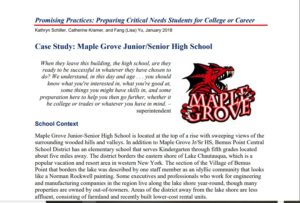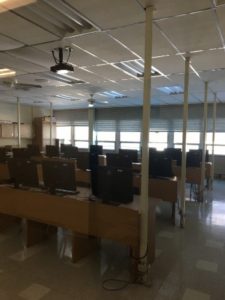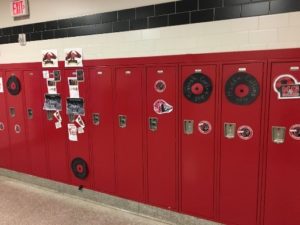Technology to Achieve Teaching and Learning Goals: Highlighting Maple Grove Junior-Senior High School
By Lisa Yu
In response to school closures due to COVID-19, educators around the world are looking for guidance in how to use technology in ways that keep students on track for high school graduation and prepared for college or career. This blog highlights Maple Grove Junior-Senior High School where NYKids researchers identified a number of exemplary practices, including the use of a detailed educational technology plan. Like Alfred-Almond Junior-Senior High School, featured in the first of our special blogs on technology, Maple Grove Junior-Senior High School is one of the seven schools identified for their significantly better graduation outcomes in the NYKids College and Career Readiness study.
Technology to Achieve Teaching and Learning Goals
Maple Grove, situated in a rural community in western New York, has turned to technology as one approach to staying ahead of the curve for its students. As the principal reported, the integration of technology helps Maple Grove maintain its reputation as a “destination” school that has “rigorous academics, really preparing kids.” Three main educational goals are achieved through the successful and continuous use of technology.
Goal #1: Provide Equal Access to AP Courses through Remote Learning Options
All students in Maple Grove are encouraged to attempt Advanced Placement or college-level courses. Over the last few years, the school has steadily expanded its offering of AP and college-level courses in conjunction with an area community college or via a distance education network. Courses include Latin, United States history, psychology, biology, statistics, calculus, computer science, and physics. The superintendent and principal both mentioned that online AP courses are allowing the school to diversify its offerings and provide more flexible course scheduling so that these courses can be made available to any student who is interested. This move to diversify offerings for more students was a purposeful act as the principal recalled being frustrated by restricting advanced courses to only top students:
“What about those kids that, you know, might not be in the top eighth but they do well or they’re interested in being a history teacher or something like that? If we do the AP online, then we can offer it to anyone that wants to take it.”
Students benefit too as they are able to connect to the system at any point during the school day. The school also offered “blended” courses in which students accessed online courses in the library, but then met with teachers if they struggled with the material. The principal and superintendent both indicated that efforts to expand online and blended course offerings would continue so that more students can take an advanced course that interests them. “I would like to have every student take a least one online class before they leave,” the principal explained, adding, “Because . . . so many college classes now are online . . . we thought it would be important that we teach the kids that skill.”
Goal #2: Track Student Data to Support Social and Emotional Well-being and Academic Development
Teachers and other staff members have access to an integrated schoolwide data system that compiles information such as attendance, grades, and records of parent meetings. This data system tracks students’ performance from third grade on so that teachers can identify students’ strengths and weaknesses and offer individualized support accordingly. Student support staff members described their process of using this data system as first looking at students’ attendance patterns and then having conversations with students and parents about reasons for missing school. They then review academic data to see what sort of difficulties these students are having in classes. One Maple Grove educator explained that they ask questions like, “Are [students] not coming because there’s some academic delay that we need to provide an intervention for? Do we need to customize instruction so that [students] feel successful here?”
Goal #3: Use Technology for Assessment and Feedback
Technology is also widely used in classrooms as a way to engage students. Every student in Maple Grove is assigned a laptop to use to access class materials and submit assignments. Although some teachers complained about technological limitations, they acknowledged that technological tools enable them to easily communicate assignments and post notes.
Teachers also use an online test manager through which they create assessments for their classes, aligned with the New York State Learning Standards. Whether quickly checking on student knowledge using a daily “entry or exit ticket” or a test at the end of a curriculum unit, teachers link their questions to the Standards so that, as one teacher explained, they can later “look at the data to see how the kids did.” The system makes giving meaningful feedback to students quick and relatively easy.
While many of these practices and resources take time to put in place, this example provides some insight into a few key ways to use technologies to enhance students’ learning in a school with better than average Regents and Advanced Regents graduation rates.
If you would like to read more about Maple Grove’s approach to technology integration see the NYKids Maple Grove case study, as well as this video interview which highlights how Maple Grove built upon existing technology pratice to develop a remote learning plan in response to COVID-19 school closures. And for more research about technology integration and technology-related resources, see our Research-Based Resource Collections page. We hope these are useful and welcome comments and suggestions for topics you would like to read more about at nykids@albany.edu



